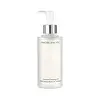What's inside
What's inside
 Key Ingredients
Key Ingredients

 Benefits
Benefits

 Concerns
Concerns

 Ingredients Side-by-side
Ingredients Side-by-side

Cetyl Ethylhexanoate
EmollientDicaprylyl Carbonate
EmollientPolyglyceryl-10 Dioleate
EmulsifyingPentaerythrityl Tetraethylhexanoate
EmollientPEG-8 Glyceryl Isostearate
EmollientParfum
MaskingCamellia Sinensis Seed Oil
HumectantLimonene
PerfumingButylphenyl Methylpropional
PerfumingCitronellol
PerfumingWater
Skin ConditioningTocopherol
AntioxidantLinalool
PerfumingCocos Nucifera Oil
MaskingBetula Platyphylla Japonica Juice
Skin ConditioningButylene Glycol
HumectantVaccinium Myrtillus Fruit Extract
Skin ConditioningGlycine Soja Oil
EmollientZingiber Officinale Root Extract
MaskingSaccharum Officinarum Extract
MoisturisingCitrus Aurantium Dulcis Fruit Extract
MaskingCitrus Limon Fruit Extract
MaskingAcer Saccharum Extract
Skin ConditioningCamellia Sinensis Leaf Extract
AntimicrobialPhenoxyethanol
PreservativeCaprylyl Glycol
Emollient1,2-Hexanediol
Skin ConditioningDisodium EDTA
Ethylhexylglycerin
Skin ConditioningCetyl Ethylhexanoate, Dicaprylyl Carbonate, Polyglyceryl-10 Dioleate, Pentaerythrityl Tetraethylhexanoate, PEG-8 Glyceryl Isostearate, Parfum, Camellia Sinensis Seed Oil, Limonene, Butylphenyl Methylpropional, Citronellol, Water, Tocopherol, Linalool, Cocos Nucifera Oil, Betula Platyphylla Japonica Juice, Butylene Glycol, Vaccinium Myrtillus Fruit Extract, Glycine Soja Oil, Zingiber Officinale Root Extract, Saccharum Officinarum Extract, Citrus Aurantium Dulcis Fruit Extract, Citrus Limon Fruit Extract, Acer Saccharum Extract, Camellia Sinensis Leaf Extract, Phenoxyethanol, Caprylyl Glycol, 1,2-Hexanediol, Disodium EDTA, Ethylhexylglycerin
Helianthus Annuus Seed Oil
EmollientOlea Europaea Fruit Oil
MaskingCamellia Sinensis Seed Oil
HumectantCaprylic/Capric Triglyceride
MaskingPolyglyceryl-2 Sesquioleate
EmulsifyingShea Butter Ethyl Esters
EmollientPolyglyceryl-2 Caprate
EmulsifyingSimmondsia Chinensis Seed Oil
EmollientIsopropyl Shea Butterate
EmollientCamellia Oleifera Seed Oil
Skin ConditioningRicinus Communis Seed Oil
MaskingAroma
Sambucus Nigra Fruit Extract
AstringentTocopherol
AntioxidantSqualane
EmollientPlukenetia Volubilis Seed Oil
EmollientArnica Montana Extract
Skin ConditioningBorago Officinalis Leaf Extract
Skin ConditioningCalendula Officinalis Flower Extract
MaskingMedicago Sativa Extract
TonicSpiraea Ulmaria Extract
AstringentSilybum Marianum Ethyl Ester
Skin ConditioningPersea Gratissima Oil
Skin ConditioningPrunus Armeniaca Kernel Oil
MaskingVitis Vinifera Seed Oil
EmollientLimonene
PerfumingCitronellol
PerfumingGeraniol
PerfumingLinalool
PerfumingHelianthus Annuus Seed Oil, Olea Europaea Fruit Oil, Camellia Sinensis Seed Oil, Caprylic/Capric Triglyceride, Polyglyceryl-2 Sesquioleate, Shea Butter Ethyl Esters, Polyglyceryl-2 Caprate, Simmondsia Chinensis Seed Oil, Isopropyl Shea Butterate, Camellia Oleifera Seed Oil, Ricinus Communis Seed Oil, Aroma, Sambucus Nigra Fruit Extract, Tocopherol, Squalane, Plukenetia Volubilis Seed Oil, Arnica Montana Extract, Borago Officinalis Leaf Extract, Calendula Officinalis Flower Extract, Medicago Sativa Extract, Spiraea Ulmaria Extract, Silybum Marianum Ethyl Ester, Persea Gratissima Oil, Prunus Armeniaca Kernel Oil, Vitis Vinifera Seed Oil, Limonene, Citronellol, Geraniol, Linalool
 Reviews
Reviews

Ingredients Explained
These ingredients are found in both products.
Ingredients higher up in an ingredient list are typically present in a larger amount.
Camellia Sinensis Seed Oil is the oil expressed from the seeds from the tea plant. This is the same plant we get green, black, and oolong tea from.
Camellia Sinensis Seed Oil is rich in oleic acid. This makes it an effective moisturizer. By drawing moisture to the skin, Camellia Oleifera Seed Oil helps keep your skin hydrated.
Other components of Camellia Sinensis Seed Oil includes Vitamin E and polyphenols. These are antioxidants that may help slow down the signs of aging. Antioxidants help fight free-radicals, or unstable molecules that can damage our skin cells.
Camellia Sinensis Seed Oil also has anti-inflammatory properties.
The seed oil comes from the dried kernels of the plant.
Learn more about Camellia Sinensis Seed OilCitronellol is used to add fragrance/parfum to a product. It is often derived from plants such as roses. In fact, it can be found in many essential oils including geranium, lavender, neroli, and more. The scent of Citronellol is often described as "fresh, grassy, and citrus-like".
Since the Citronellol molecule is already unstable, Citronellol becomes irritating on the skin when exposed to air.
Citronellol is a modified terpene. Terpenes are unsaturated hydrocarbons found in plants. They make up the primary part of essential oils.
Citronellol is not able to be absorbed into deeper layers of the skin. It has low permeability,
Citronellol is also a natural insect repellent.
Learn more about CitronellolLimonene is a fragrance that adds scent and taste to a formulation.
It's found in the peel oil of citrus fruits and other plants such as lavender and eucalyptus. The scent of limonene is generally described as "sweet citrus".
Limonene acts as an antioxidant, meaning it helps neutralize free radicals.
When exposed to air, oxidized limonene may sensitize the skin. Because of this, limonene is often avoided by people with sensitive skin.
The term 'fragrance' is not regulated in many countries. In many cases, it is up to the brand to define this term. For instance, many brands choose to label themselves as "fragrance-free" because they are not using synthetic fragrances. However, their products may still contain ingredients such as essential oils that are considered a fragrance.
Learn more about LimoneneLinalool is a fragrance and helps add scent to products. It's derived from common plants such as cinnamon, mint, citrus, and lavender.
Like Limonene, this ingredient oxidizes when exposed to air. Oxidized linalool can cause allergies and skin sensitivity.
This ingredient has a scent that is floral, spicy tropical, and citrus-like.
Learn more about LinaloolTocopherol (also known as Vitamin E) is a common antioxidant used to help protect the skin from free-radicals and strengthen the skin barrier. It's also fat soluble - this means our skin is great at absorbing it.
Vitamin E also helps keep your natural skin lipids healthy. Your lipid skin barrier naturally consists of lipids, ceramides, and fatty acids. Vitamin E offers extra protection for your skin’s lipid barrier, keeping your skin healthy and nourished.
Another benefit is a bit of UV protection. Vitamin E helps reduce the damage caused by UVB rays. (It should not replace your sunscreen). Combining it with Vitamin C can decrease sunburned cells and hyperpigmentation after UV exposure.
You might have noticed Vitamin E + C often paired together. This is because it is great at stabilizing Vitamin C. Using the two together helps increase the effectiveness of both ingredients.
There are often claims that Vitamin E can reduce/prevent scarring, but these claims haven't been confirmed by scientific research.
Learn more about Tocopherol